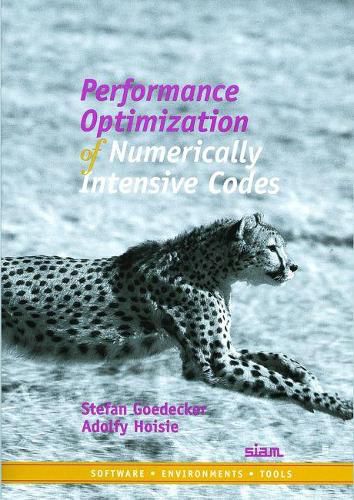Readings Newsletter
Become a Readings Member to make your shopping experience even easier.
Sign in or sign up for free!
You’re not far away from qualifying for FREE standard shipping within Australia
You’ve qualified for FREE standard shipping within Australia
The cart is loading…






Performance Optimization of Numerically Intensive Codes offers a comprehensive, tutorial-style, hands-on, introductory and intermediate-level treatment of all the essential ingredients for achieving high performance in numerical computations on modern computers. The authors explain computer architectures, data traffic and issues related to performance of serial and parallel code optimization exemplified by actual programs written for algorithms of wide interest. The unique hands-on style is achieved by extensive case studies using realistic computational problems. The performance gain obtained by applying the techniques described in this book can be very significant. The book bridges the gap between the literature in system architecture, the one in numerical methods and the occasional descriptions of optimization topics in computer vendors’ literature. It also allows readers to better judge the suitability of certain computer architecture to their computational requirements.
$9.00 standard shipping within Australia
FREE standard shipping within Australia for orders over $100.00
Express & International shipping calculated at checkout
Performance Optimization of Numerically Intensive Codes offers a comprehensive, tutorial-style, hands-on, introductory and intermediate-level treatment of all the essential ingredients for achieving high performance in numerical computations on modern computers. The authors explain computer architectures, data traffic and issues related to performance of serial and parallel code optimization exemplified by actual programs written for algorithms of wide interest. The unique hands-on style is achieved by extensive case studies using realistic computational problems. The performance gain obtained by applying the techniques described in this book can be very significant. The book bridges the gap between the literature in system architecture, the one in numerical methods and the occasional descriptions of optimization topics in computer vendors’ literature. It also allows readers to better judge the suitability of certain computer architecture to their computational requirements.